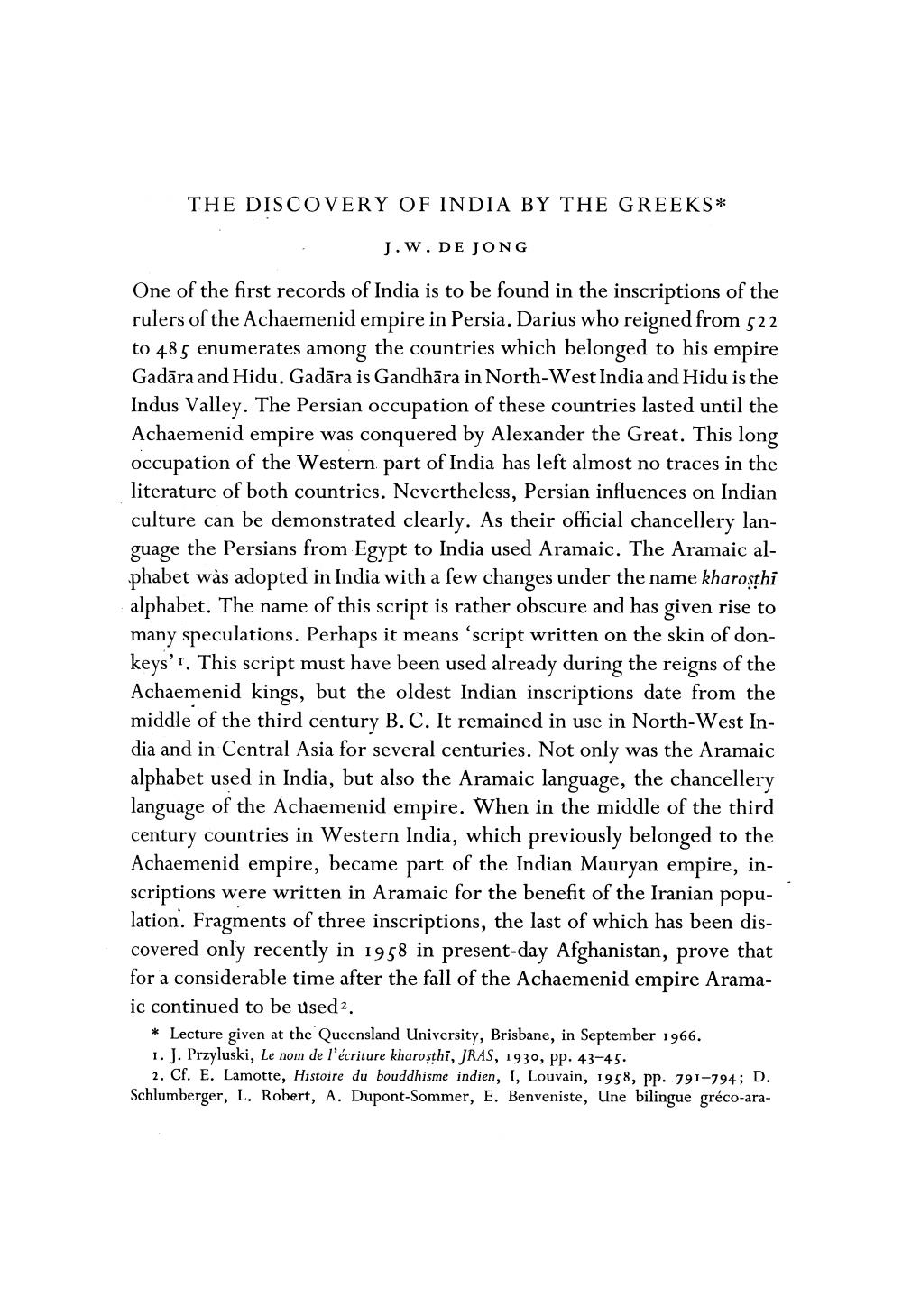________________
THE DISCOVERY OF INDIA BY THE GREEKS*
J.W. DE JONG
One of the first records of India is to be found in the inscriptions of the rulers of the Achaemenid empire in Persia. Darius who rei to 485 enumerates among the countries which belonged to his empire Gadāra and Hidu. Gadāra is Gandhāra in North-West India and Hidu is the Indus Valley. The Persian occupation of these countries lasted until the Achaemenid empire was conquered by Alexander the Great. This long occupation of the Western part of India has left almost no traces in the literature of both countries. Nevertheless, Persian influences on Indian culture can be demonstrated clearly. As their official chancellery language the Persians from Egypt to India used Aramaic. The Aramaic alphabet was adopted in India with a few changes under the name kharosthi alphabet. The name of this script is rather obscure and has given rise to many speculations. Perhaps it means 'script written on the skin of donkeys's. This script must have been used already during the reigns of the Achaemenid kings, but the oldest Indian inscriptions date from the middle of the third century B. C. It remained in use in North-West India and in Central Asia for several centuries. Not only was the Aramaic alphabet used in India, but also the Aramaic language, the chancellery language of the Achaemenid empire. When in the middle of the third century countries in Western India, which previously belonged to the Achaemenid empire, became part of the Indian Mauryan empire, inscriptions were written in Aramaic for the benefit of the Iranian population. Fragments of three inscriptions, the last of which has been discovered only recently in 1958 in present-day Afghanistan, prove that for a considerable time after the fall of the Achaemenid empire Aramaic continued to be used2.
* Lecture given at the Queensland University, Brisbane, in September 1966. 1. J. Przyluski, Le nom de l'écriture kharoşthi, JRAS, 1930, PP. 43-45.
2. Cf. E. Lamotte, Histoire du bouddhisme indien, I, Louvain, 1958, pp. 791-794; D. Schlumberger, L. Robert, A. Dupont-Sommer, E. Benveniste, Une bilingue gréco-ara




